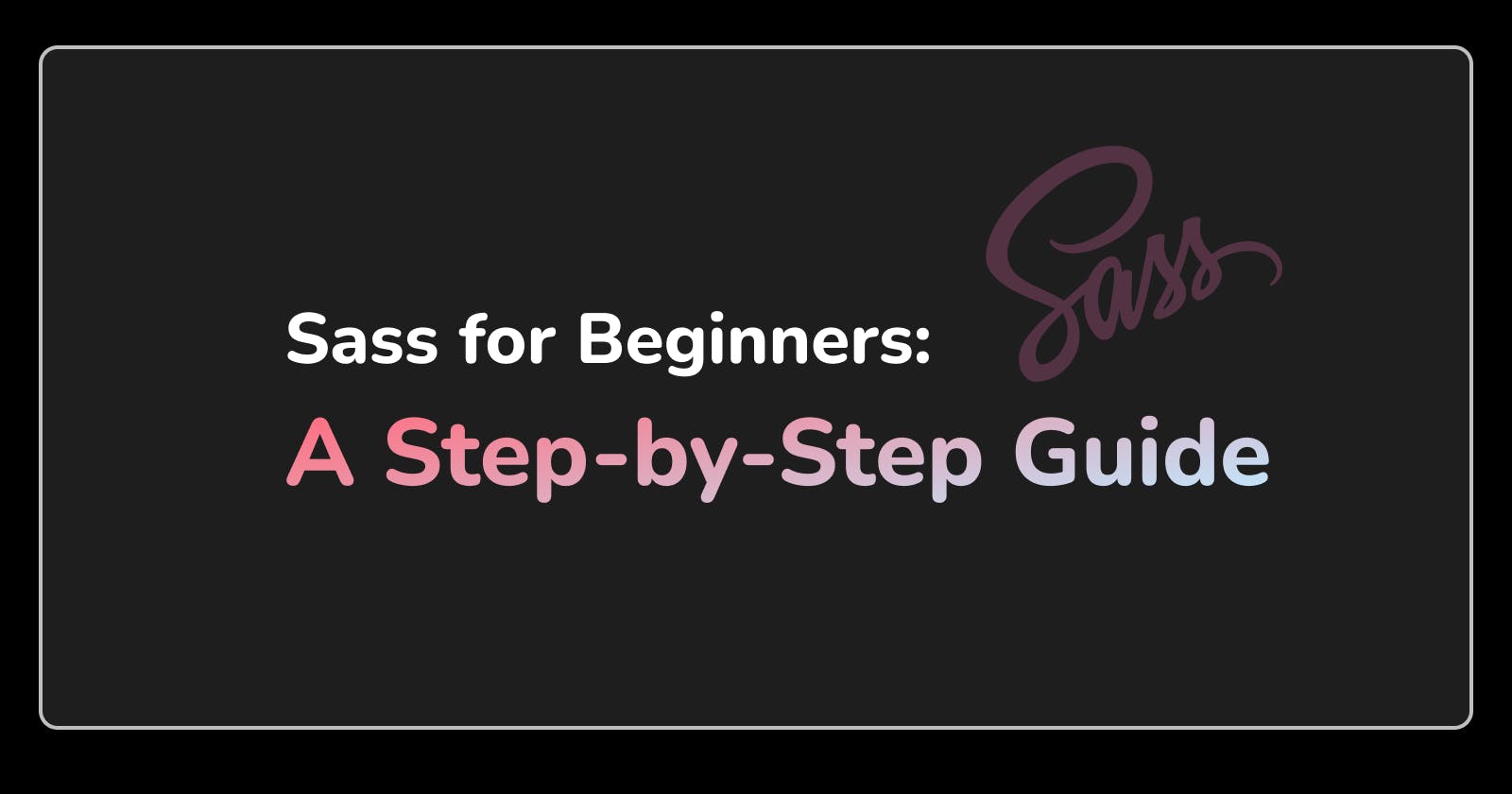What is Sass?
Sass(Syntactically Awesome Style Sheets) was designed by Hampton Catlin and developed by Natalie Weizenbaum in 2006. Sass is a CSS processor. It means that Sass is a language that builds on top of CSS, adding new features and functionality. Sass is not a replacement for CSS. But rather than a tool that can make writing CSS easier and more efficient.
Why use Sass?
Stylesheets are getting larger, more complex, and harder to maintain. This is where CSS pre-processors can help.
Sass lets you use features that do not exist in CSS, like variables, nested rules, mixins, imports, inheritances, built-in functions, and other stuff.
Getting Started with Sass
Installation and Setup
Sass, standing for Syntactically Awesome Stylesheets, is a preprocessor scripting language that is interpreted or compiled into Cascading Style Sheets (CSS). It provides a more organized and efficient way to write CSS. Here's how to install Sass and set up a project:
Using npm (Node Package Manager):
If you have Node.js and npm installed, you can easily install Sass globally using the command line:
npm install -g sassInstall on Windows (Chocolatey)
If you use the Chocolatey package manager for Windows, you can install Dart Sass by running
choco install sassInstall on Mac OS X or Linux (Homebrew)
If you use the Homebrew package manager for Mac OS X or Linux, you can install Dart Sass by running
brew install sass/sass/sass
Creating a Sass File
Once Sass is installed, you can start creating Sass files and structuring your project:
Folder Structure:
Organize your project with a dedicated folder for Sass files. For instance:
project/
└── styles/
└── main.scss # Main Sass file
└── partials/ # Folder for partial Sass files
└── _variables.scss
Sass Features
variables
Variables in Sass allow you to store and reuse values throughout your stylesheets. They are defined using the
$symbol followed by the variable name and can store various data types, such as colors, numbers, or strings.Sass variable syntax:
$variablename: value;Here's an example:
$primary-color: #3498db; $font-size: 16px; body { color: $primary-color; font-size: $font-size; }💡Best Practices - Use meaningful variable namesSass nested properties
Sass allows you to nest CSS rules within one another, mimicking the HTML structure. This feature helps organize your styles and eliminates repetitive typing. Nesting helps maintain a clear hierarchy in your styles, resembling the HTML structure.
nav { ul { margin: 0; padding: 0; list-style: none; li { display: inline-block; margin-right: 10px; a { text-decoration: none; } } } }Mixins
Mixins are reusable blocks of styles that can be included in other styles using
@include. Mixins are useful for applying consistent styles across your project. They can accept parameters, making them highly flexible. Example:@mixin button-styles($background-color, $text-color) { background-color: $background-color; color: $text-color; padding: 10px 20px; border: none; } .button { @include button-styles(#3498db, #ffffff); }💡Mixins promote code reusability and help maintain a consistent design language throughout your application.Partials
Sass allows you to break your styles into smaller, manageable files called partials. Partial files are prefixed with an underscore (e.g.,
_variables.scss). They are not compiled into standalone CSS files.// _variables.scss $primary-color: #3498db; $font-family: 'Arial, sans-serif';Imports
Sass provides the
@importdirective to combine multiple partial files into a single, compiled CSS file. This enhances code organization and maintainability.@import 'variables'; @import 'typography'; @import 'layout';
Conclusion
In this blog post, we've demystified Sass (Syntactically Awesome Stylesheets) and explored its fundamental features, providing a solid foundation for beginners. Here's a recap of what we've covered:
Sass Syntax Features:
Introduced variables, mixins, and nesting.
Demonstrated their usage and showcased how they enhance CSS authoring and maintainability.
Getting Started with Sass:
Discussed installation methods (npm, windows, macOS) and project setup.
Guided in creating a Sass file and structuring a project for efficient development.
Best Practices:
Encouraged meaningful variable names and organized variable grouping.
Stressed the importance of well-structured mixins with single responsibilities.
Now that you have a foundational understanding of Sass, we encourage you to start integrating it into your projects. Sass can significantly enhance your CSS workflow, making it more efficient, organized, and maintainable. As you experiment and grow more comfortable with Sass, you'll find yourself creating styles faster and with greater ease.
Additional Resources
To further expand your knowledge and skills in Sass, here are some recommended resources:
Official Sass Documentation:
